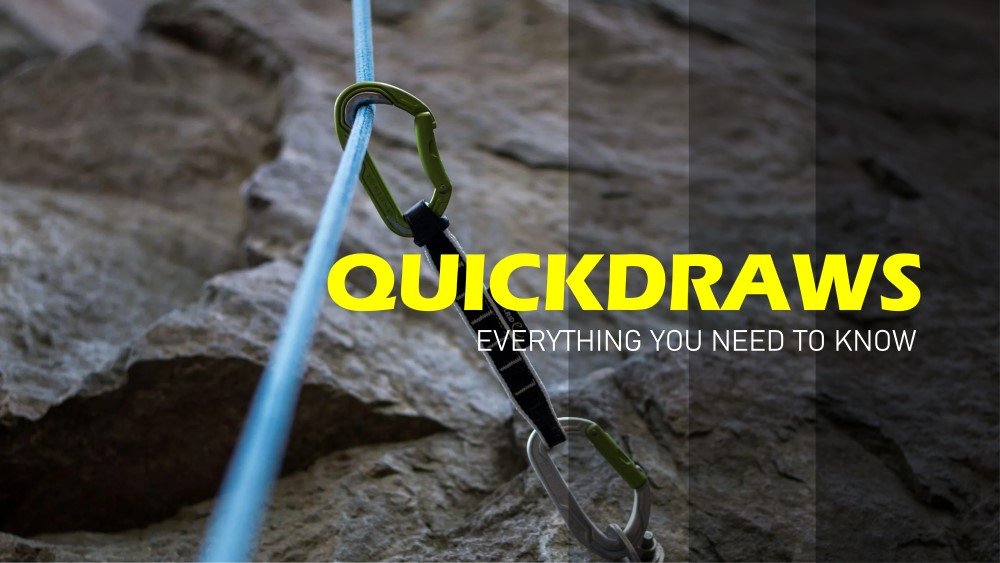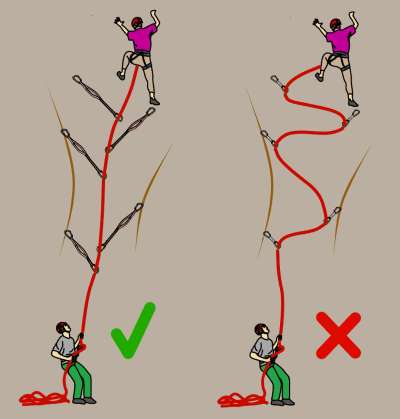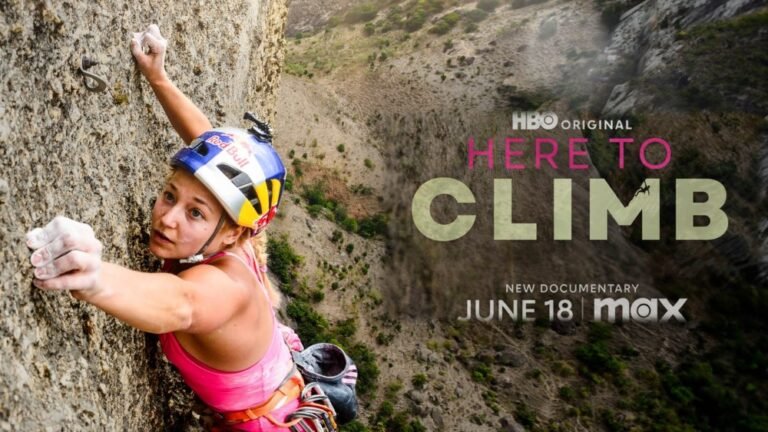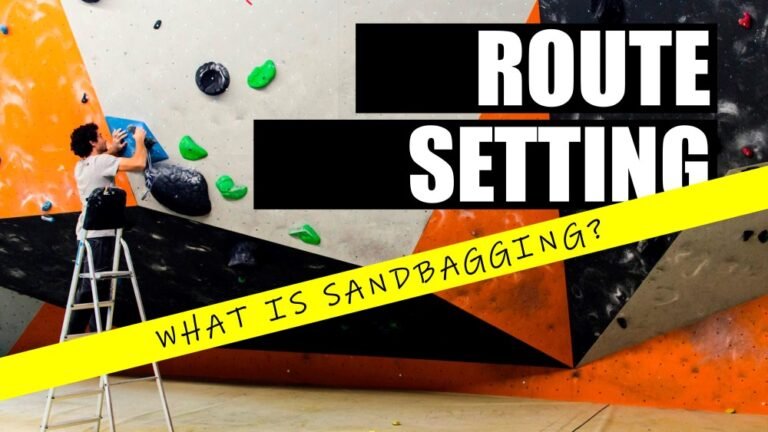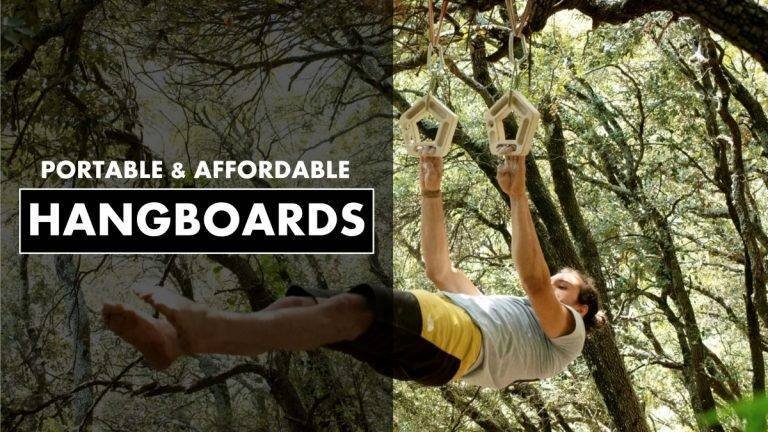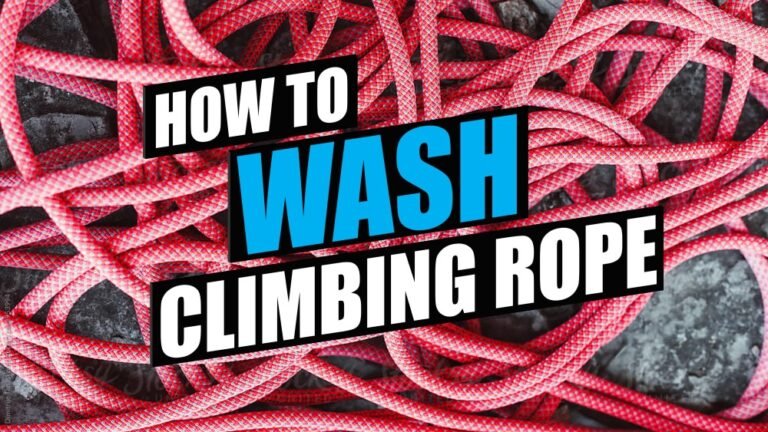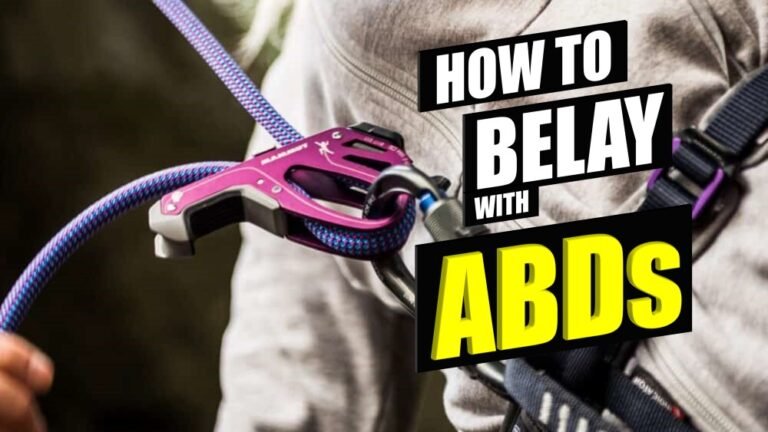Find out everything you need to know about quickdraws. If you are new to sport climbing and just about to dabble in lead climbing. Understanding this gear should be your priority, even if you have been lead climbing for years in the gym where quickdraws are already on the wall.
The purpose of quickdraws is to protect a climber from hitting the ground when taking a fall. Hence, quickdraws are essential gear for all climbers. Quickdraws come in various lengths and carabiner combinations to serve specific purposes.


Quickdraws components


Carabiner
A quickdraw consists of 2 carabiners. The climber will clip 1 carabiner (top) into the bolt hanger on the wall. The rope to the other carabiner (bottom). The carabiner that is clipped into the bolt hanger will experience more damage. Such as scratches and cuts due to metal-to-metal contact. The other carabiner where the rope is clipped will not. Hence it is important not to use the carabiners interchangeably. The quickdraw carabiner used for clipping ropes should always be smooth and scratches-free. Thus the rope will not be damaged when climbers take a fall.
The type of carabiners used for the bolt end and the rope end should be different, in terms of the nose design and colour. Carabiners with a conventional notch nose design will tend to get caught on the bolt hanger. This will cause the gate to remain open and thus reduce the carabiner’s strength. Carabiners with keylock design will not have such issues.
Sling or “Dogbone”
The sling or “dogbone” of a quickdraw is the piece of webbing used to connect the 2 carabiners. Especially when climbing outdoors it is necessary to have quickdraws with different lengths. Depending on the route and the position of the bolts. There will be situations where climbers will encounter rope drag when using quickdraws with short dogbone. Using quickdraws with a long dogbone or an extended sling can help to reduce rope drag significantly.
Quickdraws with different lengths give climbers more options to ensure the quickdraws are placed in the optimum position. There can be situations where the quickdraw’s carabiner at the rope end sits on a sharp edge. The carabiner may break if the climber takes a fall on the quickdraw. Thus having quickdraws with different lengths can minimize such risk.
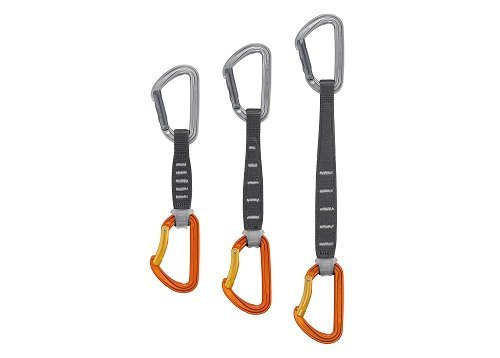



Extendable quickdraws


Extendable quickdraws or (alpine draws) are commonly made up of a 60cm sling with 2 wire gate carabiners. An extendable quickdraw with a 60cm sling will provide climbers with a 20cm length option when fully extended 60cm. Extendable quickdraws allow climbers a quick way to extend the quickdraw. Which can reduce rope drag when climbing long routes.
Shortening an extendable quickdraw
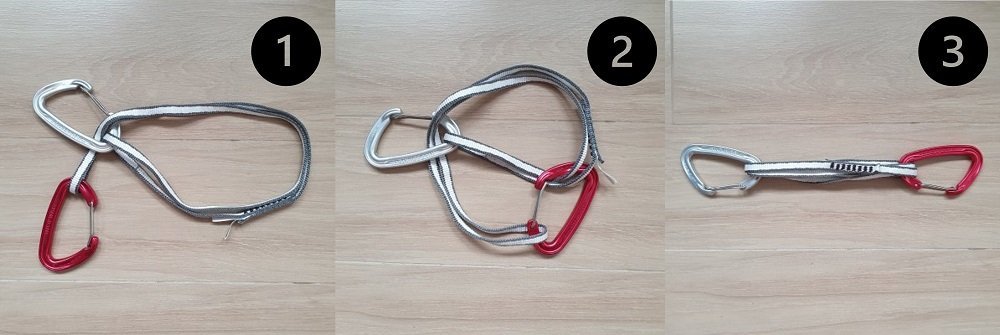

Lengthening an extendable quickdraw


Quickdraw setup
Quickdraw sling
There are a few things to take note of when setting up quickdraws. The sling has 2 loop ends. 1 loop end is larger with room for the carabiner to move about. The other loop end will be tight and narrow (some will come with a rubber keeper). The larger loop end is for the bolt carabiner and the tight loop end is for the rope carabiner.
After clipping the top carabiner to the bolt hanger. The position of the top carabiner should not be shifted regardless of the movement of the quickdraw. If the top carabiner is on the snug end of the sling. The movement of the quickdraw may shift the top carabiner away from its strongest position (near the spine of the carabiner). If that happens the strength of the carabiner will be reduced.


The bottom carabiner for clipping rope needs to be on the snug end of the sling. Some quickdraws come equipped with a rubber keeper at the rope end carabiner to prevent the carabiner from rotating.
Carabiner orientation
Quickdraw carabiners can be set up in 2 possible orientations. (1) Both top and bottom carabiners facing the same direction or (2) top and bottom carabiners facing the opposite direction.


(Right) Top and bottom carabiners facing a different direction
Although the quickdraw will work with the carabiners facing either orientation. However, the recommended practice is to have the carabiners facing the same direction. This is particularly relevant for traverse climbs. The gate of the bottom carabiner needs to be facing the opposite direction of the traverse. This is to eliminate any chance of unclipping during a fall. With both top and bottom carabiners facing the same direction.
Climbers should orientate the gate of both the top and bottom carabiners to face away from the direction of the traverse. This will ensure the top carabiner is loaded on the spine (the strongest part of the carabiner) of the carabiner. Also to prevent any possibility of the top carabiner from unclipping from the bolt during a fall.




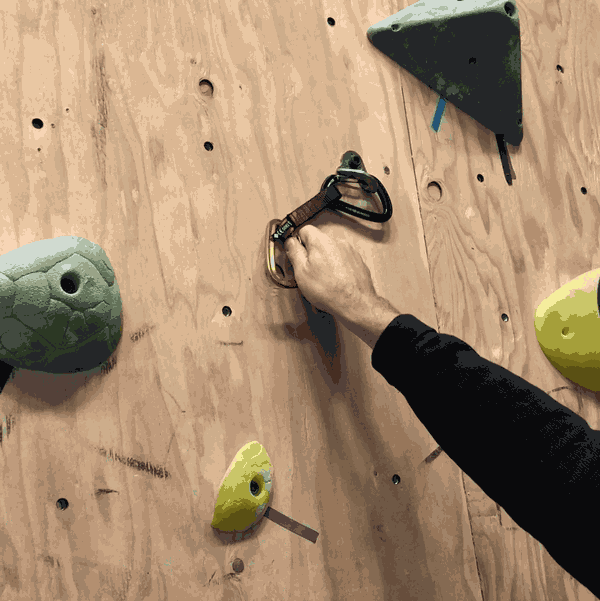

Check out this great article by Black Diamond on the Opposing Quickdraw Carabiners.
Colour differentiation
To improve efficiency in racking up. It is advisable to use different colour carabiners to differentiate bolt end from rope end carabiners. Quickdraws of different lengths should also be differentiated by colours. This allows climbers to easily identify quickdraws and rack up accordingly. When climbing, climbers can simply have a glance at their rack. Grab the right gear saving precious time and energy.
A highly recommended practice when comes to choosing colour carabiners for quickdraws. By using dull colours (e.g silver or black) for bolt-end carabiners. And bright colours (e.g red, green, gold or blue) for rope end carabiners. A bright colour bottom carabiner stands out against the colour of the wall thus easier for climbers to spot the carabiner to clip in.


Conclusion
Quickdraws are critical gear for climbing outdoors. Understanding how each component of the quickdraw works. Know how to set up your quickdraws and all the possible equipment failures that can take place. Understanding the different types of equipment failure will make your outdoor climb a lot safer. Different types of quickdraws have specific purposes and functions. Thus it will be necessary to have a variety of quickdraw sets for different types of climbing.

